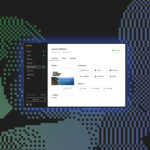What if you want to display multiple blogs or posts on multiple pages of your site, but only have a single install of WordPress? Sorry, it’s just not possible to do such a thing – or is it?
There are many requests for this kind of feature in the WordPress.org support forums, including one post that I responded to recently. It may sound odd to Multisite advocates, but why not? If you only need multiple blogs without all the separate sites then it could be a useful feature.
While it’s technically not possible to have multiple blogs on a single install, there’s a simple work around to do this without using plugins or a special theme. Most of your users probably won’t even notice a difference between the two.
Gear up your single install of WordPress in this Weekend WordPress Project where I will show you how to create as many blogs as you want, all without having to install Multisite.
Creating New Blogs on a Single WordPress Install
We’ll accomplish this with the use of blog categories. Start by going to Posts > Categories in the backend of your site.
For each blog you would like to create and display, add it as a category. Don’t forget to save by clicking the Add New Category button.

When you’re done, journey over to Appearance > Menus. Select the menu you would like your blogs to appear from the drop down list labelled Select a menu to edit, then click the Select button.
If you haven’t created a menu yet, click the create new menu link at the top of the page. Beside Menu Name, enter a title in the field that comes up followed by clicking Save Menu to the right.
You may also choose to select the checkbox to make your new menu the primary one under the Menu Settings heading.

Choose the Categories tab on the left of the page and select the categories you created, which will serve as your new blogs. If you don’t see your newly created categories listed, click the View All link above the list of categories currently in view.
When you’re finished, click the Add to Menu button below the category list.
If you would like, reorder the category links by clicking on one of them from the list, dragging it to where you would like it to appear, then dropping it into place.

Now you can head over to the front-end of your site and see your new pseudo blogs listed in your menu. When you create new posts, don’t forget to choose the correct category so your post shows up on the appropriate page.

That’s it, you’re done. Your new posts will show up on these different pages, sans Multisite.
Conclusion
While this might not technically be totally separate blogs, it will sure look like it and you won’t have to worry about fussing with Multisite when you don’t need all its features.
Tags:











